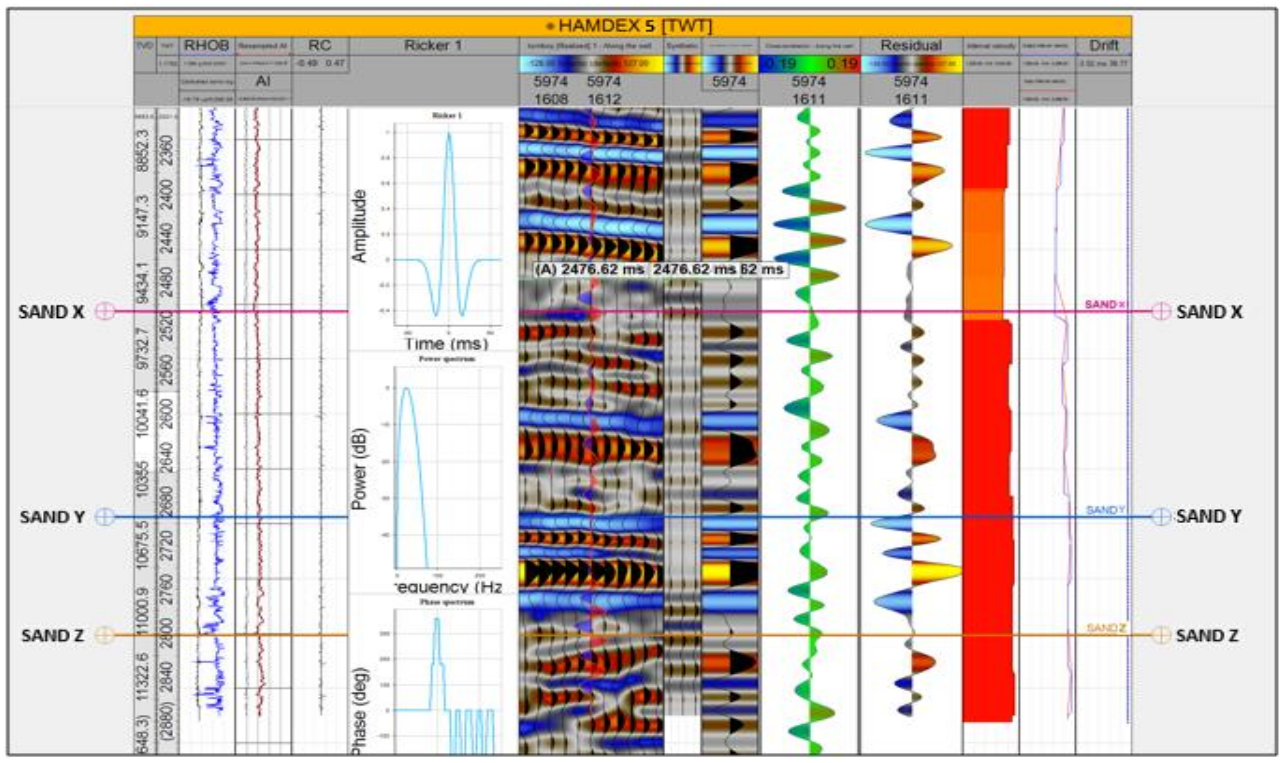Quantitative reservoir evaluation and hydrocarbon volumetrics :an integrated petrophysical and 3-D static modeling approach in ‘Hamphidex’ field, Niger-Delta, Nigeria
Keywords:
Lithology, Net-to-gross, Hydrocarbon saturation, Hydrocarbon reservesAbstract
The viability and hydrocarbon volumetrics of the Hamphidex field reservoirs were evaluated using petrophysical analysis and three-dimensional (3D) static modeling of three key reservoir sands (X, Y, and Z). The petrophysical analysis involved detailed characterization of lithologies, net-to-gross ratios, porosity, hydrocarbon saturation, water saturation, and permeability. The volumetric attributes of the field were derived from the constructed 3D reservoir models. Two geostatistical methods—Sequential Gaussian Simulation (SGS) and Sequential Indicator Simulation (SIS)—were utilized for facies and property modeling, focusing on porosity and permeability. Comprehensive facies models and petrophysical property models were developed for each reservoir sand (X, Y, and Z), integrating 3D visualizations of facies distributions, porosity, permeability, water saturation, and fluid contact models. These models also included cross-sectional views, providing a detailed spatial representation of the reservoir's characteristics. Two main facies, sand and shale, were identified, with sand acting as the hydrocarbon reservoir. Well-log correlations in six wells (Hamdex-02, 06, 01, 05, 04 and 07) of the field show that sands X, Y, and Z have lateral continuity and their hydrocarbon potential varies between wells. Specifically, Sand ‘X’ contains hydrocarbons in Hamdex-05 and Hamdex-07, Sand ‘Y’ is hydrocarbon-rich in Hamdex-05, and Sand ‘Z’ shows hydrocarbon presence in Hamdex-06, Hamdex-05, and Hamdex-04. These hydrocarbons are confined within an anticlinal structural trap that closes on a fault. For Sand X, Y, and Z, porosity values range between 16 and 25%, permeability varies from 10 to 1600 mD, water saturation lies within 7 to 50%, and hydrocarbon saturation spans from 50 to 93%. The volumetric assessments from the build models showed that Sand X, Y and Z have Stock-Tank-Oil-Initially-In-Place (STOIIP) of 75.864, 8.566 and 80.177 Million Barrels (MMbbl) respectively. In addition to Sand Y STOIIP it also has Gas-Initially-In-Place (GIIP) of 14.870 Billion Standard Cubic Feet (Bscf). The analysis indicates that the field contains substantial hydrocarbon reserves, with the petrophysical properties confirming the reservoirs' high quality. These findings demonstrate that the field is economically viable and suitable for development, presenting a strong potential for successful exploitation.

Published
How to Cite
Issue
Section
Copyright (c) 2024 Akindeji Opeyemi Fajana, Adam Muhammed Olawale, Hammed Ajibola Oyesomi

This work is licensed under a Creative Commons Attribution 4.0 International License.







